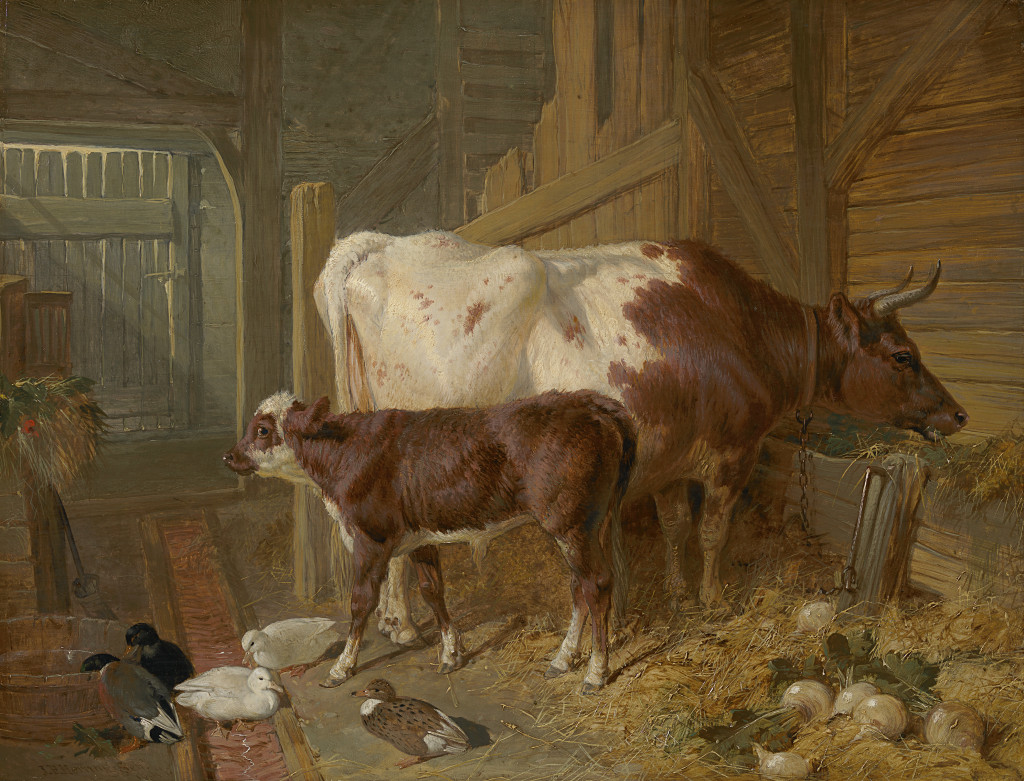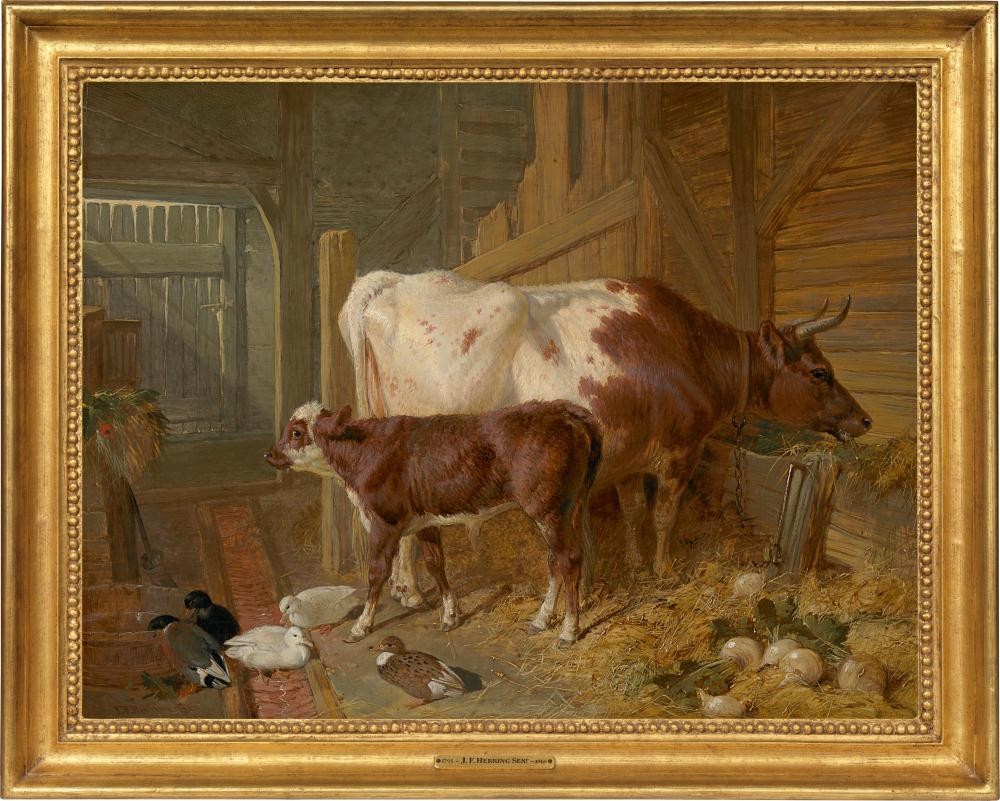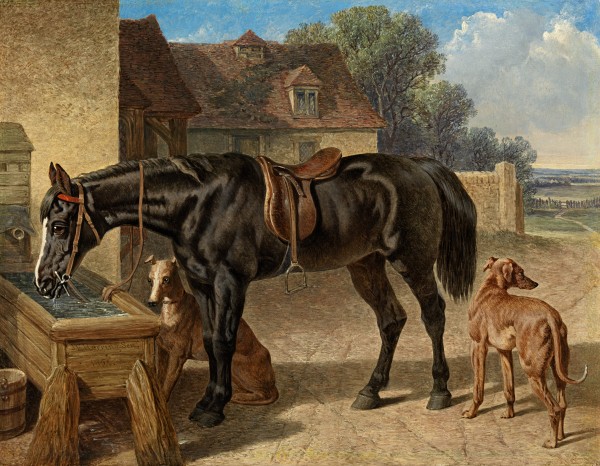JOHN FREDERICK HERRING SNR
Surrey 1795 - 1865 Meopham Park, Kent
Ref: BV 213
A cow and her calf in stable interior with ducks
Signed and dated lower left: J.F. Herring Senr. / 1847.
Oil on panel: 13 x 17¼ in / 33 x 43.8 cm
Frame Size: 17 x 21 in / 43.2 x 53.3 cm
In a hollow gilded frame
Provenance:
Arthur Ackermann, London
SE Kennedy;
Mrs EAM Riley-Smith, Bridge House, Loxwood, West Sussex;
Sotheby’s sale at Bridge House, 14th July 1982, lot 9;
Richard Green, London, 1982;
private collection, UK
Exhibited:
London, Richard Green, Annual Exhibition of Sporting Paintings, 1982, pp.60-1, no.28, illus.
John Frederick Herring was the son of Benjamin Herring, a London fringe maker and upholsterer of Dutch parentage, who had been born in America. The first eighteen years of his life were spent in London, where his greatest interests were drawing and horses. In 1814 he moved to Doncaster, arriving just in time to see the Duke of Hamilton’s William win the St Leger. By 1815 he had set up house with Ann Harris; his sons John Frederick Herring Jnr (1815/21-1907), Charles (1828-1856) and Benjamin (1830-1871) were all to become artists, while his daughters Ann and Emma both married painters.
In Doncaster Herring earned his living as a painter of coach insignia and inn signs and his contact with a firm owned by a Mr Hill led to his employment as a night coach driver, a surprisingly glamorous profession where speed and skill were much admired. Herring graduated to be driver of the prestigious High Flyer which plied between York and London. Herring’s spare time was spent playing the clarinet, composing music and painting portraits of horses for inn parlours; he became known as the ‘artist coachman’. His talent was quickly recognised and he soon found himself painting hunters and racehorses for the gentry, among them Charles Stanhope and the Hon. Edward Petre. He first exhibited at the Royal Academy in 1818 and in 1825 was commissioned by the Doncaster Gazette to paint the winners of the St Leger, which were engraved. This series and the series of Derby winners which followed in 1827 disseminated Herring’s work to a wide public. Around this time Herring seems to have taken lessons from the sporting artist Abraham Cooper (1787-1868) to address the technical shortcomings of having been self-taught.
In 1830, Herring left Doncaster for Six Mile Bottom, Newmarket, where he spent three years before moving to Camberwell, London. In London Herring got into financial difficulties and was rescued by William Taylor Copeland, who commissioned many paintings including designs used for Copeland Spode bone china. His companion Ann died in 1838 and Herring subsequently married Sarah Gale (1794-1882/3). In 1840-41 Herring visited Paris by invitation of the Duc d’Orléans, for whom he painted several racehorses. In 1845 Herring was appointed Animal Painter to HRH the Duchess of Kent. There followed a commission from Queen Victoria, who was to remain a patron for the rest of his life. Herring spent the last twelve years of his life at Meopham Park near Tonbridge, Kent, where he lived as a country squire. He now broadened his subject matter and painted agricultural scenes and narrative pictures, as well as his hunting, racing and shooting pictures.
A highly successful and prolific artist, Herring ranks with Sir Edwin Landseer as one of the most eminent animal painters of the mid-nineteenth century. Herring exhibited at the Royal Academy 1818-65, the British Institution 1830-65 and the Society of British Artists (whose Vice-President he became in 1842), 1836-52. He died at Meopham Park on 23rd September 1865.

























